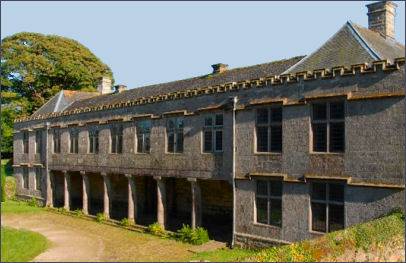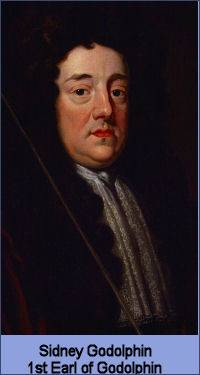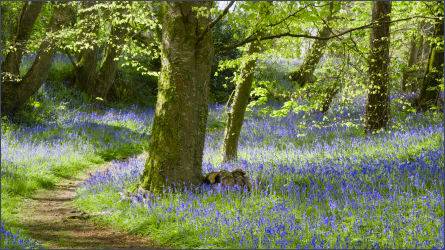Godolphin House
OS grid ref:- SW 601 318
 Situated at Godolphin Cross, between Helston and Penzance, Godolphin House, one of the most fashionable houses in Cornwall in the seventeenth century, is the former seat of the Dukes of Leeds and the Earls of Godolphin. The granite Tudor and Stuart mansion is remnant of a much more extensive mansion.
Situated at Godolphin Cross, between Helston and Penzance, Godolphin House, one of the most fashionable houses in Cornwall in the seventeenth century, is the former seat of the Dukes of Leeds and the Earls of Godolphin. The granite Tudor and Stuart mansion is remnant of a much more extensive mansion.
The Godolphins made their fortune from the local tin-mining industry, becoming one of the leading families of West Cornwall. The present house occupies the site of a small castle, built around 1300 by Sir Alexander Godolghan. In the mid sixteenth century, Sir William Godolphin, a soldier in the service of Henry VIII, made some alterations to the house and further work was carried out in the later part of the sixteenth century by Sir Francis Godolphin, Governor of the Scilly Isles.
 In the 1630s, William Godolphin, the son of Sir Francis, added the north entrance range and by the middle of the seventeenth century Godolphin House had reached the pinnacle of its development. Sidney Godolphin, William's grandson, was appointed to the post of Lord Treasurer to Queen Ann between 1702 - 10, and was responsible for financing John Churchill, the Duke of Marlborough's wars. He was later created Earl of Godolphin. Large sections of the house were demolished in 1805, including the sixteenth century hall. The Godolphins sold the estate in 1929 to artist Sidney Elmer Schofield, who devoted the rest of his life to restoring it.
In the 1630s, William Godolphin, the son of Sir Francis, added the north entrance range and by the middle of the seventeenth century Godolphin House had reached the pinnacle of its development. Sidney Godolphin, William's grandson, was appointed to the post of Lord Treasurer to Queen Ann between 1702 - 10, and was responsible for financing John Churchill, the Duke of Marlborough's wars. He was later created Earl of Godolphin. Large sections of the house were demolished in 1805, including the sixteenth century hall. The Godolphins sold the estate in 1929 to artist Sidney Elmer Schofield, who devoted the rest of his life to restoring it.
 The house contains some fine examples of old furniture and tapestries and also features displays of horse drawn vehicles, reproduction maps, prints and documents as well as arms and armour.
The house contains some fine examples of old furniture and tapestries and also features displays of horse drawn vehicles, reproduction maps, prints and documents as well as arms and armour.
The Entrance Hall boasts an excellent sixteenth century chimneypiece but perhaps the finest features of the house are in the Dining Room, which has linen-fold panelling and carved beams dating from the early sixteenth century
The gardens at Godolphin are probably the oldest surviving formal garden in the country ( around 700 years old ) Medieval pathways lead to the side garden and its original layout still survives. The tranquil garden is due to be restored over the coming years including the sixteenth and seventeenth century ponds. The wider estate contains the remains of the Leeds engine house and stack, the Godolphin family mine. Godolphin Hill on the south-westerly reaches of the estate provides stunning views over St Ives Bay to the north and St Michael's Mount to the south. Years of mining have left an unnatural, undulating landscape in the woodland.
The Godolphin Estate came into the possession of the National Trust in 2007.
Historic Buildings in Cornwall